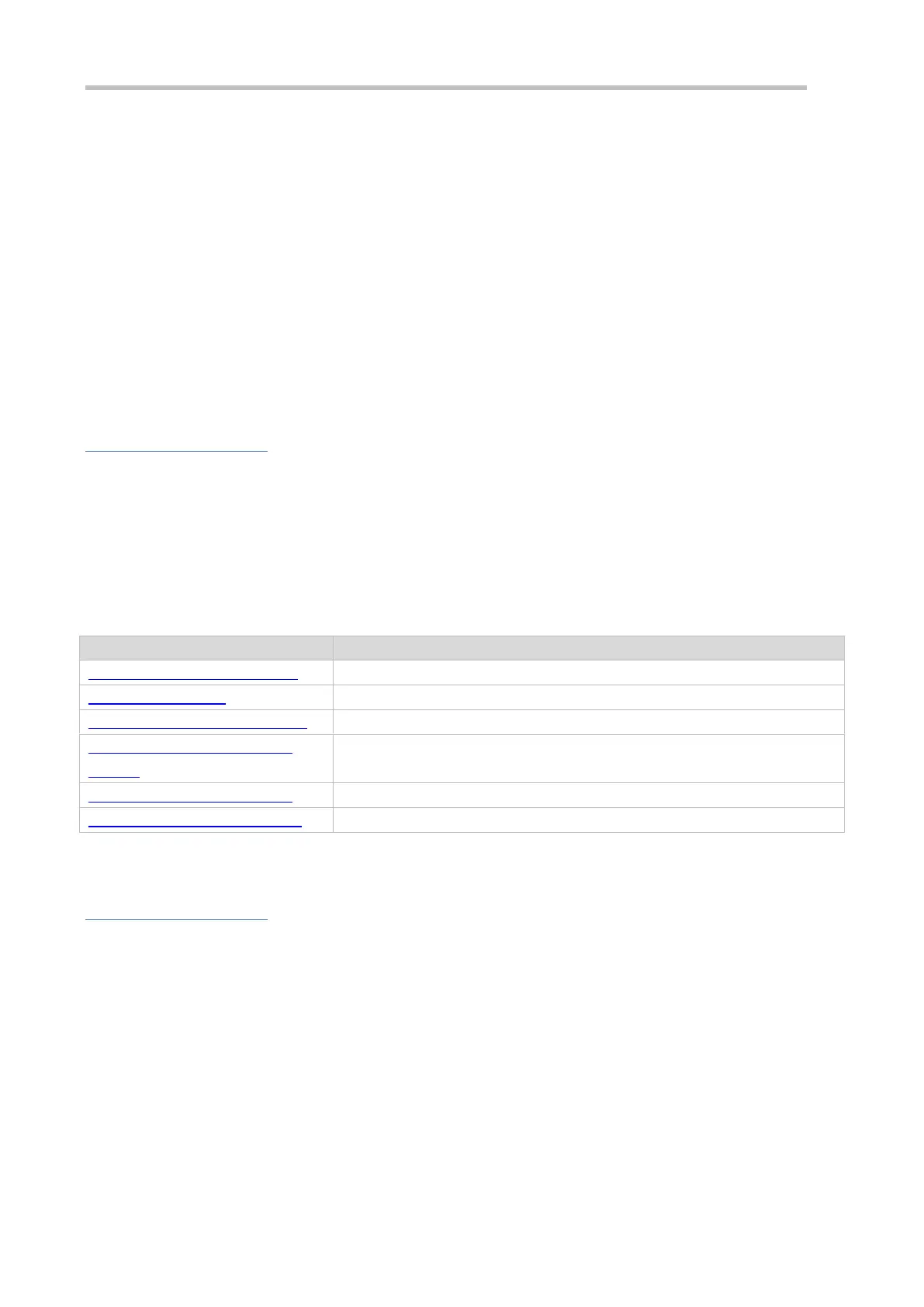Configuration Guide Configuring DHCPConfiguring DHCP
4 Configuring DHCP
4.1 Overview
The Dynamic Host Configuration Protocol (DHCP) is a LAN protocol based on the User Datagram Protocol (UDP) for
dynamically assigning reusable network resources, for example, IP addresses.
The DHCP works in Client/Server mode. A DHCP client sends a request message to a DHCP server to obtain an IP
address and other configurations. When a DHCP client and a DHCP server are not in a same subnet, they need a DHCP
relay to forward DHCP request and reply packets.
Protocols and
Standards
RFC2131: Dynamic Host Configuration Protocol
RFC2132: DHCP Options and BOOTP Vendor Extensions
RFC3046: DHCP Relay Agent Information Option
4.2 Applications
Providing DHCP Service in a LAN
Assigns IP addresses to clients in a LAN.
Applying AM Rule on DHCP Server
Apply DHCP Server in Super VLAN environment.
Deploying DHCP Relay in Wired
Network
In a wired network, users from different network segments requests IP
addresses.
Deploying DHCP Relay in WLAN
In a WLAN, users from different network segments requests IP addresses.
Applying AM Rule on DHCP Relay
In a Super VLAN, users from different network segments requests IP addresses.
4.2.1 Providing DHCP Service in a LAN
Scenario
Assign IP addresses to four users in a LAN.
For example, assign IP addresses to User 1, User 2, User 3 and User 4, as shown in the following figure.
The four users are connected to Server S through A, B, C and D.

